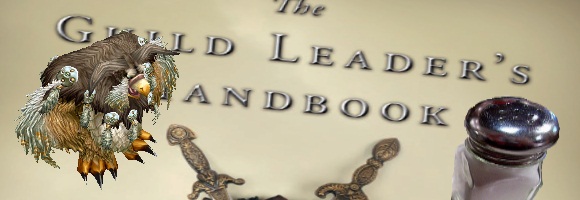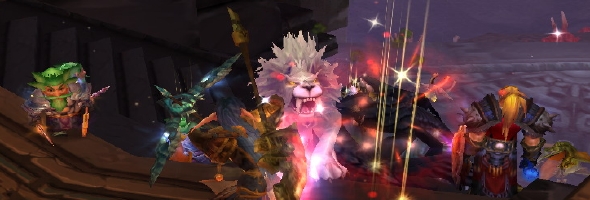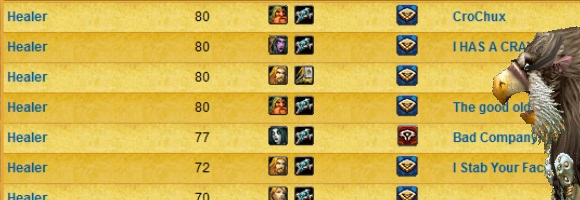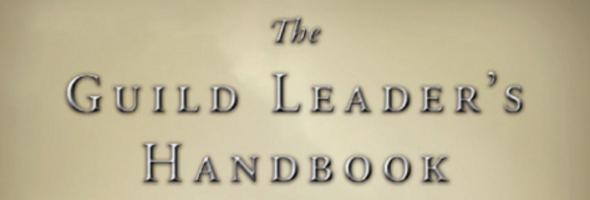
I’m sure you’ve heard the news by now. In patch 3.3.5 Blizzard intends to intentionally break AVR/AVRE. It is not the first time that something like this has happened, but it does strike me as a bit odd as to the reasoning behind it.
If you missed the full announcement here it is for you
Bashiok — AVR Mod Broken in 3.3.5
This is a notice that we’re making changes in 3.3.5 in attempts to break the ability for the AVR (Augmented Virtual Reality) mod to continue functioning. For those unaware, this mod allows players to draw in the 3D space of the game world, which can then be shared with others who are also using the mod. In some cases this manifests itself through drawing/tagging/defacing the game world, but more popularly is used to give visual guides for dungeon and raid encounters.
We’re making this change for two reasons. The invasive nature of a mod altering and/or interacting with the game world (virtually or directly) is not intended and not something we will allow. World of Warcraft UI addons are never intended to interact with the game world itself. This is mirrored in our stance and restriction of model and texture alterations. The second reason is that it removes too much player reaction and decision-making while facing dungeon and raid encounters. While some other mods also work to this end, we find that AVR and the act of visualizing strategy within the game world simply goes beyond what we’re willing to allow.
The change we’re making in attempts to break the functionality is light in its touch and approach. When blocking any functionality we run the risk of affecting other mods, but we’ve targeted the changes as carefully as possible. If we find that the AVR mod (or any mod attempting to replicate its functions) are usable after 3.3.5 we will take further, more drastic steps.
Now don’t get me wrong, I’m not saying that they are wrong to not want to see mods like this disabled, but they claim it is because of the invasive nature of the mod and that it allows altering and interacting with the game world. Well, we interact with the game world all the time don’t we? We kill a mob, that’s interacting right there! Silly statement I know but it is the truth. Simply by being in the world and playing the game we are interacting with the world and on some level altering the state of play for those around us. As far as calling it invasive or that it alters the game world, I don’t know. Is it any more invasive than any other boss mod? Take a look at most boss mods, they mark players that are affected by effects, provide warnings both visual and audio before a boss does an ability and effectively simplify encounters. Some even give you arrows telling you where to run from an effect, others include range finders to tell you how far away you are from other players in order to avoid making some boss abilities chain or augment. Mods like Auctioneer allow you to alter the way you interact with the auction house, postal allows you to modify how you access the mail in the game world, power auras allows you to be notified of every single buff and debuff in the game and mods like grid allow you to alter how you view the members of your party and allow you control over what information is filtered through and omen alerts you to threat compared to all other party members.
So what makes AVR so taboo? I was thinking about it and it reminded me of a funny story from my pen and paper days.
I was playing Dungeons and Dragons (tabletop pen and paper version) with a group of friends. Our party was supposed to set up an ambush to take out a band of mercs about three times our size. I was playing a halfling rogue at the time and was the party’s wet works guy. I would sneak around, spy on things and help set traps. Our fighter in the party was a tactical genius (the player has since moved on to a military career and it is very fitting for him as he honestly was a huge strategist) and came up with a plan that involved key movements at key points in time. My character happened to have a bunch of chalk, and came up with the idea of setting markers on the walls and floor to indicate thresholds for those lying in wait. It could indicate when to attack and after a point when to break off and regroup or attack from a different direction. The fighter loved this idea, and we set about marking the ruins we were using as the kill zone in markings the party would understand. We then set various traps and waited for our ambush to take place. As the mercs entered the ruins we watched from hiding as they breached the thresholds, we attacked. The mercs moved past another marking and we dove back into hiding and onto the next position. This continued until the band was no more. We took no casualties and had a well executed plan thanks to a series of chalk markings. The GM joked at the time of having allowed us to have such general items and them coming in so handy.
So, is AVR so different than the chalk we used in that game session? I don’t feel that it is when used to say, mark spots on the ground for people to collapse to or stand at during certain encounters. On a personal level I will miss it not because of anything it did during a boss fight, but I truly loved the way it interacted with Totem Radius in showing me the effective range of my totems in real time. That said I wont lose any sleep over it going away, but I think Blizzard may have been a bit hasty in their aggression towards this mod. Personally I don’t feel it is any more invasive than any other mod they currently allow in the game, and honestly once you allow mods or addons of any sort you are inviting a sort of intrusion into that which you created.
Did it make things too simple and remove player thought from the game? I don’t think so either, I’ve seen enough people with it installed still mess up quite frequently. It was not a guaranteed win for boss fights otherwise we would see a lot more people having downed ICC heroic mode when using this. In the end a mod is no substitution for attentiveness to the game and player skill. This one just happened to let us John Madden things a bit, and occasionally draw funny objects where they don’t belong.
So what do you think? Do you support Blizzard decision to break the mod? Do you think it made things too easy? Will you miss being able to draw stick figures randomly in ICC?
![]()



